

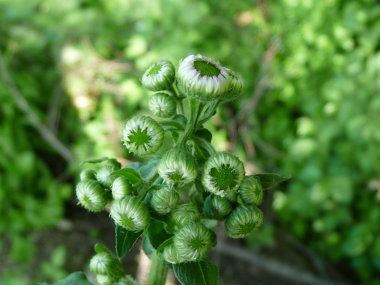
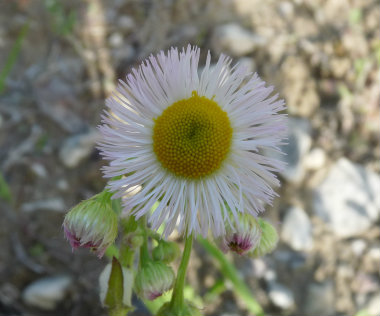

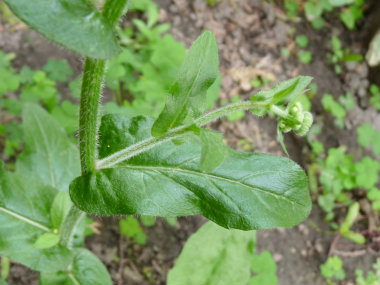
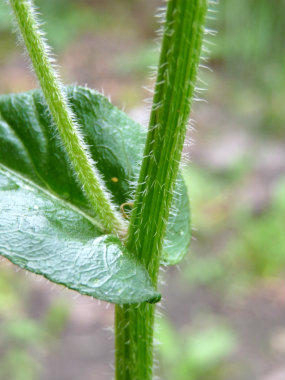
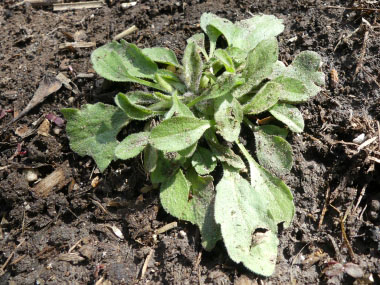
To support our efforts please browse our store (books with health benefits, etc.).
Erigeron annuus, whose scientific name accurately indicates it is an annual plant. Erigeron comes from Greek meaning "early" and "old man," which allude to the plant's tendency to blossom in late spring and to form fuzzy white seed heads while still producing new flowers. Daisy fleabane, like other fleabane wildflowers, derives its common name from the superstition that dried clusters of these plants could be used to rid a dwelling of fleas. Although it cannot do that, it is however used as a diuretic and medicine for digestive ailments.
Distinguishing Features
Daisy fleabane is recognizable due to its composite flowers, hairy stems and hairy leaves. It is a pretty, but ubiquitous plant that seems to appear on its own. Although in the Aster family, it is distinguished from asters with similar flowers by its earlier blooming season.
Flowers
The daisy fleabane has composite flowers and is comprised of at least forty rayless flowers. The radially symmetrical flowering structure is characterized by a wide, bright yellow, central disk that is surrounded by short, petal-like, white to white/pink rays. These rays are short compared to the width of the central disk and are supported underneath by green sepals of equal length.
 Fields
of Nutrition has medicinal benefits and vitamin/mineral content of Daisy Fleabane.
Fields
of Nutrition has medicinal benefits and vitamin/mineral content of Daisy Fleabane.
Leaves
This wild edible produces two different types of leaves; lanceolate-to-ovate, basal leaves are long, some measure up to 15 cm. in length and they are covered in hairs. The leaves along the stem are smaller, toothed, clasping, and they too are somewhat hairy.
Height
This plant can grow anywhere between 30 and 150 centimetres in height.
Habitat
Daisy fleabane tends to flourish in fields, along roadsides, and around waste areas. It prefers full sun, dry conditions, and a somewhat alkaline soil containing clay or gravel. However, this plant does adapt to soil containing fertile loam if taller, more aggressive plants do not grow nearby. They grow all across North America and have naturalized in central Europe.
Edible Parts
Only the leaves are edible. They are hairy so they have a somewhat ‘furry’ texture making eating them raw not exactly too pleasing. They can be used wherever you cook with greens. Daisy fleabane leaf extracts contain caffeic acid which is an active compound that has antioxidative and neuroprotective effects on neuronal cells.
Similar Plants
Erigeron philadelphicus.
Winter Survival Food Handbook

PDF Plant Magazines
Types of Wild Food
Geographic Zones Seasons
Disclaimer
EdibleWildFood.com is informational in nature. While we strive to be 100% accurate, it is solely up to the reader to ensure proper plant identification. Some wild plants are poisonous or can have serious adverse health effects.
We are not health professionals, medical doctors, nor are we nutritionists. It is up to the reader to verify nutritional information and health benefits with qualified professionals for all edible plants listed in this web site. Please click here for more information.
Why Edible Wild Food?
- Food costs are rising
- Free, wild food is readily abundant
- Wild food adds nutrition to your diet
- Wild food can help treat various medical conditions





